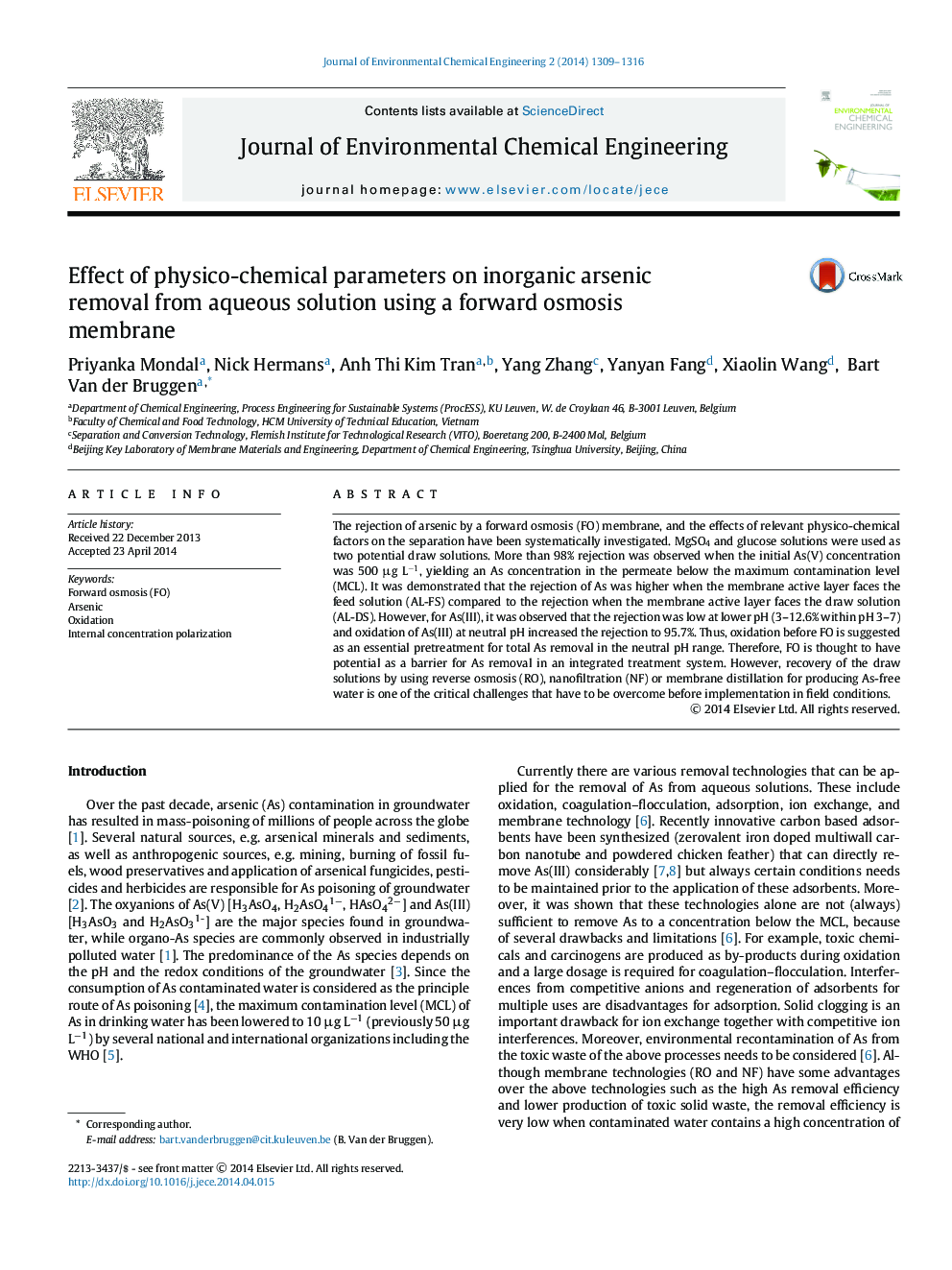| Article ID | Journal | Published Year | Pages | File Type |
|---|---|---|---|---|
| 221962 | Journal of Environmental Chemical Engineering | 2014 | 8 Pages |
•Arsenic is efficiently removed by a commercial forwarded osmosis membrane.•MgSO4 and glucose are potential draw solutions.•Pre-oxidation of As(III) is necessary.•AL-FS mode is more efficient for As removal than AL-DS mode.•Concentration polarization is responsible for high As(V) rejection.
The rejection of arsenic by a forward osmosis (FO) membrane, and the effects of relevant physico-chemical factors on the separation have been systematically investigated. MgSO4 and glucose solutions were used as two potential draw solutions. More than 98% rejection was observed when the initial As(V) concentration was 500 µg L∧1, yielding an As concentration in the permeate below the maximum contamination level (MCL). It was demonstrated that the rejection of As was higher when the membrane active layer faces the feed solution (AL-FS) compared to the rejection when the membrane active layer faces the draw solution (AL-DS). However, for As(III), it was observed that the rejection was low at lower pH (3•12.6% within pH 3•7) and oxidation of As(III) at neutral pH increased the rejection to 95.7%. Thus, oxidation before FO is suggested as an essential pretreatment for total As removal in the neutral pH range. Therefore, FO is thought to have potential as a barrier for As removal in an integrated treatment system. However, recovery of the draw solutions by using reverse osmosis (RO), nanofiltration (NF) or membrane distillation for producing As-free water is one of the critical challenges that have to be overcome before implementation in field conditions.
